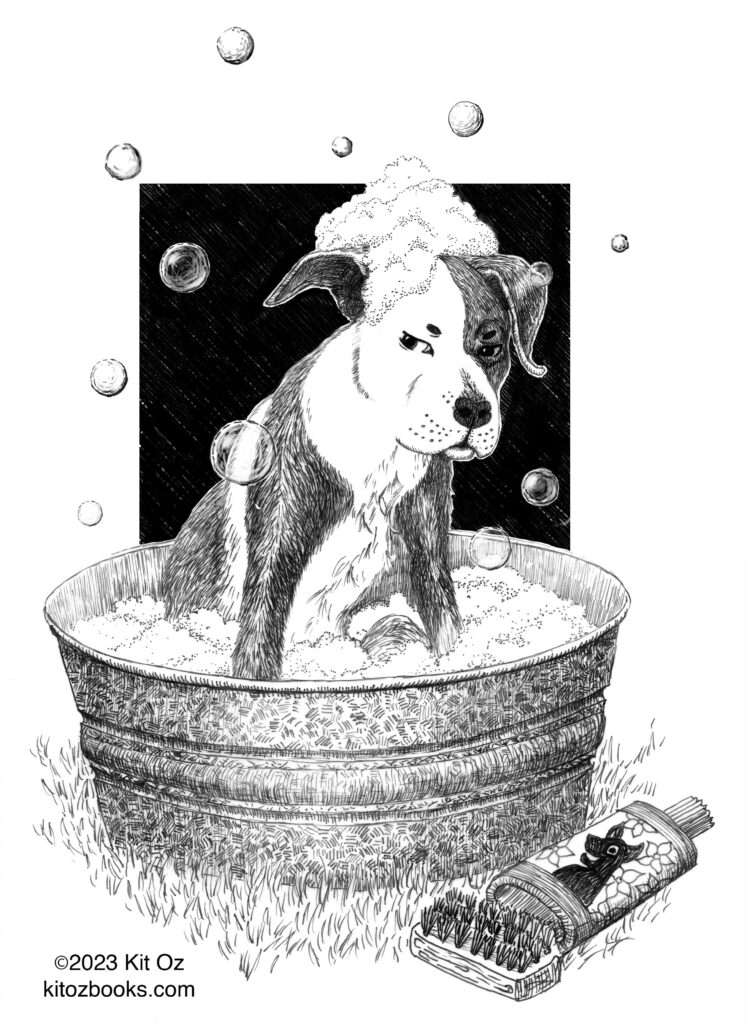Uncategorized
Autism in “Beware of Scrumpy”
When I wrote the first several drafts of Beware of Scrumpy, I had no idea that I was autistic.
The picture I had of autism was of the stereotypes we see in movies and on TV: obsession with trains, mathematical genius, “stims” like hand flapping, and a complete inability to understand the emotions of others and social rules. That didn’t sound like me, and so I thought it wasn’t me.
But then, cruising around the internet, I began to see descriptions of how different from the stereotypes the presentations of autism can be. I began to see parts of myself reflected in the stories of autistic women, and I felt so much kinship with them that I eventually had myself assessed by a psychologist.
And yes, I am autistic.
It was during my assessment for autism that I looked again at Beware of Scrumpy and realized, with a shock, that I had written a story about an autistic dog.
The hero of Beware of Scrumpy, Nico, is a stray dog who doesn’t know how to fit into the island community of Caye Caneen, and isn’t sure that he wants to. He doesn’t understand the pet-human bond, he would rather watch others than participate, and his social skills consist mostly of speaking the blunt truth. He often doesn’t know what emotion he’s feeling — a condition I now know is called alexithymia. He’s leery of being touched. He hates the feel of anything confining him, physically: a collar, a shirt. He has spent his life collecting squeaky toys, which are his most precious possessions.
Nico also has great strengths that are commonly associated with autism: he has an intense sense of loyalty, and a deep need for justice. He cannot abide cruelty, or unfairness, and will fight to make things right. He’s observant, and can think clearly in stressful situations. Well, usually.
The boy with whom Nico forms a bond, Ramón, is also autistic, although you’d have to be looking for it to see the hints in the story. It makes sense that Nico and Ramón would get along, as autistics can feel like they’re on the same wavelength, like they “get” each other in a way that perhaps doesn’t happen with the general public.
Nico’s autism isn’t going to look exactly like the autism you have seen on TV, or read about in books, or have seen in people you know — or perhaps even in yourself. Autism presents differently in everyone, which is why it is called a spectrum. The word “spectrum” is meant to convey that we each have different strengths, different weaknesses. It doesn’t mean that we’re on a sliding scale from “a little bit autistic” to “a lot autistic,” a common misunderstanding that I myself was guilty of.
My diagnosis of autism was a relief to me, as it explained so much in my life that had long puzzled or frustrated me. The diagnosis also gave me permission to accept how I was, and to protect myself from things like noise and crowds and too much socializing. It made me feel that it was okay to be how I was, and I didn’t need to fight it. There was nothing wrong with me, I was just wired differently.
There’s nothing wrong with Nico, either. Nico is autistic, and a hero not despite his autism, but in large part thanks to it.


